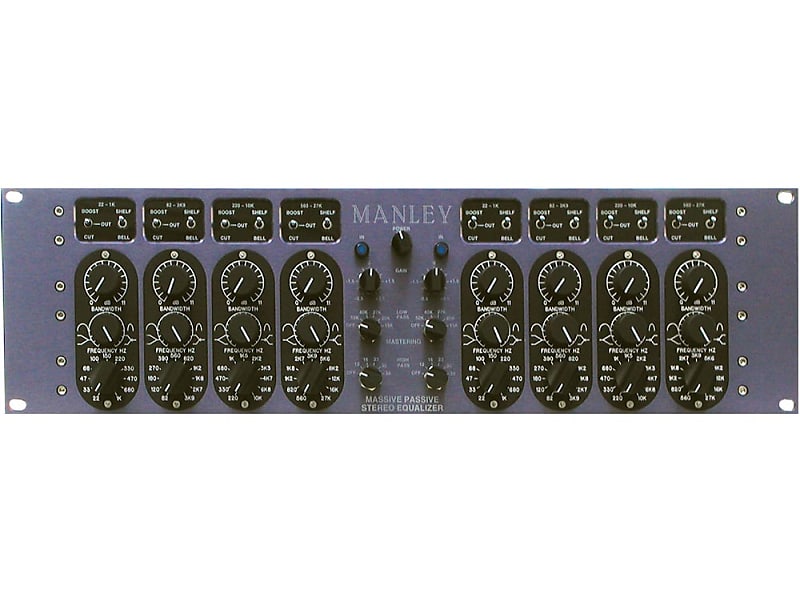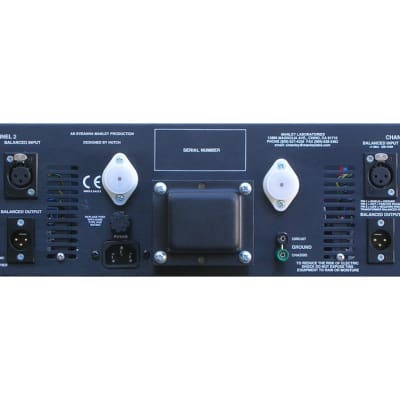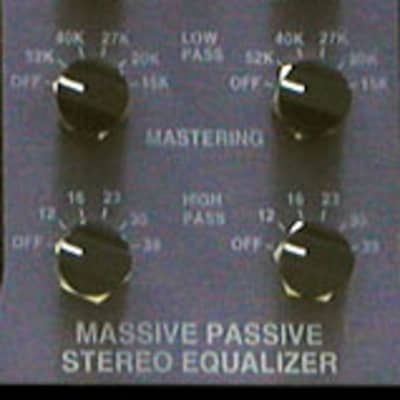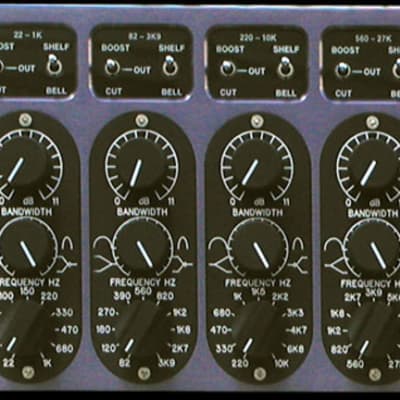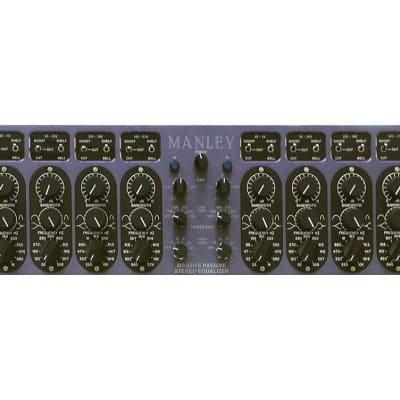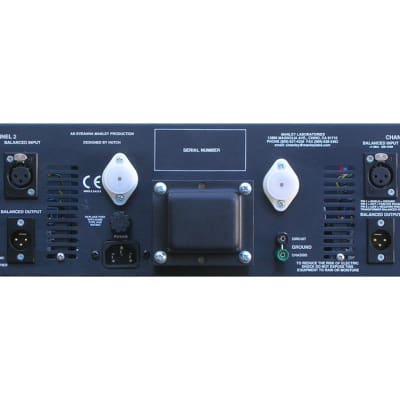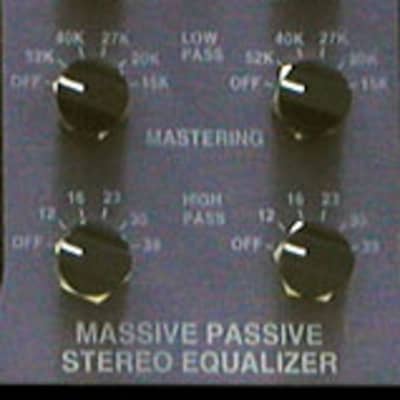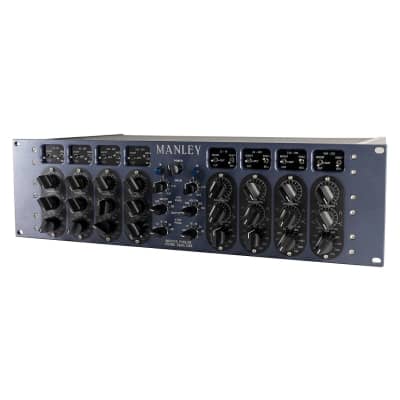Manley Massive Passive - Mastering Version
The Manley Massive Passive is a passive design and not a "true parametric." A true parametric implies non-interacting controls. In the Massive Passive, the "Gain" and "Bandwidth" controls do interact (on purpose). We cannot create a "Gain" switch that is set up for "consistent" 1/2 dB steps. When you change the "Bandwidth" the step size must and will change.
On the regular version, you get a full 20dB boost or cut only when: the bandwidth is fully clockwise (narrow) in bell mode or fully counter-clockwise in shelf mode. Here on the Mastering Version, this maximum boost or cut is 11dB. Conversely at the widest bell, the maximum boost or cut is 6dB and the narrowest shelf maxes out at 12 dB. A similar situation is also true for the bandwidth detents. So in this new Mastering Version, do not expect a certain dB change per step as it will vary according to where the bandwidth is set. But whatever the step sizes are, they will be repeatably 16 steps.
The Frequency select is already detented as it is and always has been a Grayhill switch. It also interacts in shelf mode. On a similar note, the Massive Passive is a "parallel design" and not the conventional "series design." This means the bands interact with each other too. It is possible, to set a band to boost 20 dB but if another band is boosting near or at that frequency, very little will happen. On a conventional EQ the two bands "add" and you would be boosting 40 dB into clipping. Because the bands interact, predictable step sizes are unrealistic, however, with the Mastering Version, you will be able to repeat settings (if you log them of course). The price paid for interacting bands, is a better sounding EQ and bizarre looking settings (on purpose). Unlike virtually every other EQ, the Massive Passive allows much more EQ without sounding "processed." Where 5 or 6 dB is about all one could attempt with other EQs in mastering, the Massivo amazes engineers with how much EQ they can do and get more "natural" results at the same time. We could have squeezed 11 position Grayhill switches in the modules if we had wanted 1/2 dB steps but then the maximum range would have become only 5.5 dB.
Remembering what we stated above, the minimum range would then become about 1.5 dB with approximately 0.2 dB steps. This approach would have essentially thrown away most of the useful range the unit is capable of. Going with these special mechanically detented knobs which use the same pots underneath that the normal Massivo uses, we get nearly all the range of the normal version, but with the repeatability of the detents. We have also custom tailored the Filters in the Mastering Version specifically for Mastering purposes, moving them lower and higher than the normal version, with mastering engineers specifically in mind. If you are looking for drastic effects (like telephone sounds) then get the normal version. These filters are really geared for mastering engineers. Additionally, the Master Gain Trim controls in the Mastering Version are true 11 position 1/2 dB stepped Grayhill switches set up for a range between -2.5 to +2.5 dB of master gain trim. This allows more confidence in left/right matching and calibration.
